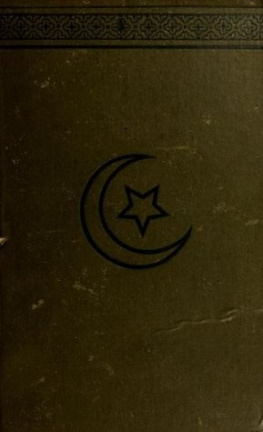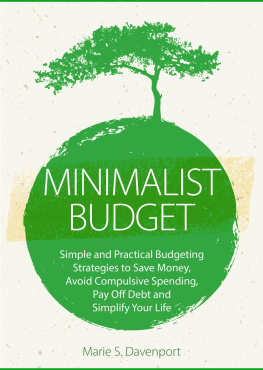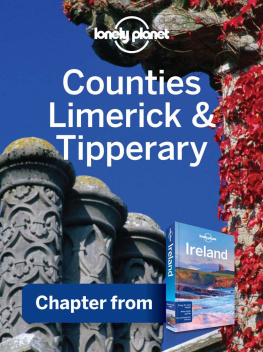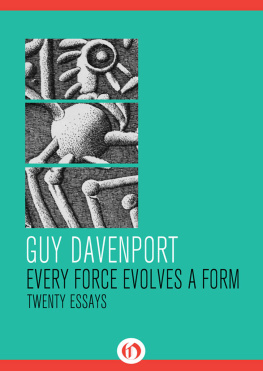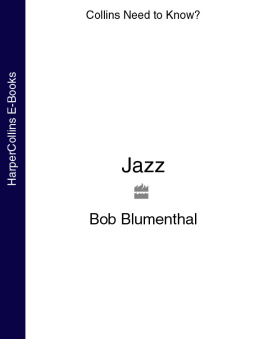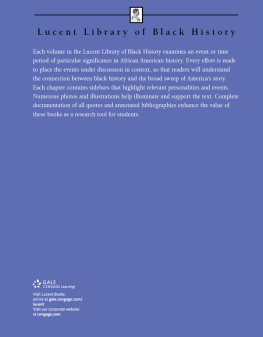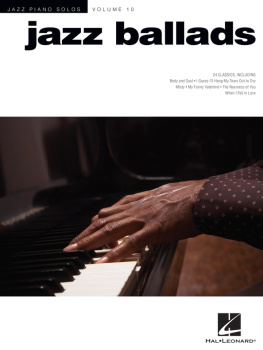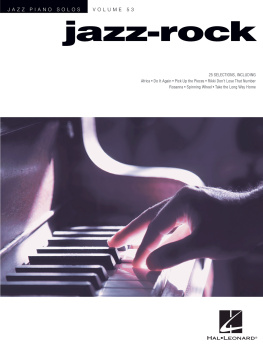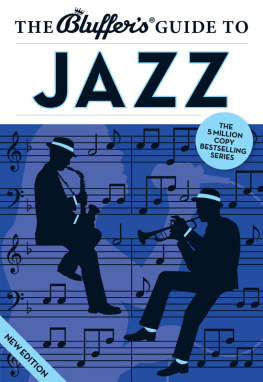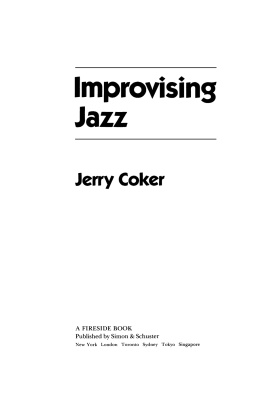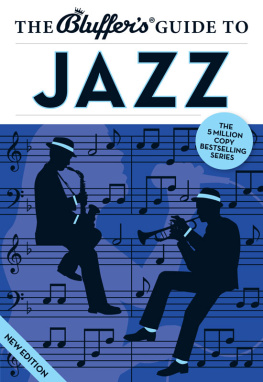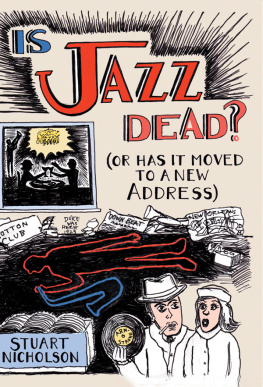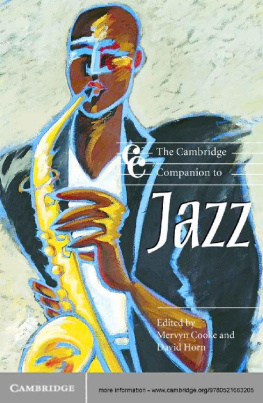Jazz Diplomacy
American Made Music Series
Advisory Board
David Evans, General Editor
Barry Jean Ancelet
Edward A. Berlin
Joyce J. Bolden
Rob Bowman
Susan C. Cook
Curtis Ellison
William Ferris
John Edward Hasse
Kip Lornell
Bill Malone
Eddie S. Meadows
Manuel H. Pea
David Sanjek
Wayne D. Shirley
Robert Walser
Jazz Diplomacy
Promoting America in the Cold War Era
Lisa E. Davenport

www.upress.state.ms.us
The University Press of Mississippi is a member of the Association of American University Presses.
Copyright 2009 by Lisa E. Davenport
All rights reserved
Manufactured in the United States of America
First printing 2009
Library of Congress Cataloging-in-Publication Data to come
Library of Congress Cataloging-in-Publication Data
Davenport, Lisa E.
Jazz diplomacy : promoting America in the Cold War era / Lisa E.
Davenport.
p. cm. (American made music series)
Includes bibliographical references and index.
ISBN 978-1-60473-268-9 (cloth : alk. paper) 1. JazzPolitical aspectsUnited StatesHistory20th century. 2. Cold WarSocial aspectsUnited States. 3. United StatesForeign relations20th century. I. Title.
ML3918.J39D38 2009
781.6509730947dc22 2009005135
British Library Cataloging-in-Publication Data available
Abbreviations
ANTA | American National Theater Academy |
CU | Bureau of Educational and Cultural Affairs |
CPP | Cultural Presentations Program |
NARA | National Archives and Records Administration |
USIS | United States Information Service |
USIA | United States Information Agency |
Jazz Diplomacy
Introduction
In January 1965 Jazz Night at the Blue Bird Youth Caf in Moscow was in full swing. Soviet club managers closely monitored the clubs clientele, and audiences were carefully selected by Soviet cultural authorities. Those attending included U.S. cultural attach Ernest G. Weiner, who had visited Jazz Night with a select group of people at the invitation of a Soviet friend. Weiner characterized the caf as though it had a mystical aura. He commented that it was ensconced on a narrow and dimly lit street and gave practically no outward indication of its existence. It was especially alluring at night when the small white globe light over the entranceway d[id] not even illuminate a perfunctory Kafe sign nearby on the wall of the building.
Inside, however, Western influence abounded. A young Russian trumpeter played with an upturned bell a la Gillespie. Such developments attested to the enduring impact of American jazz on Soviet culture and society. Jazz imbued the Soviet bloc with unique and bold American values, and in the 1960s several American officials reported on the ubiquitous presence of jazz in many Soviet bloc cities. Ultimately, the proliferation of jazz in the Soviet Union and Eastern Europe helped determine the course of the Cold War cultural rivalry between the superpowers. Benny Goodmans State Department tour to the Soviet Union in 1962 was critical in shaping this rivalry and emerged as a global symbol of the U.S.-Soviet cultural thaw that briefly came about in the early 1960s.
Such American cultural tours first became possible in 1954a watershed year in U.S. domestic and foreign affairs. In July 1954 President Dwight D. Eisenhower, seeing it as a Cold War imperative, called for the creation of a worldwide cultural exchange program for the performing arts to improve the worlds perception of American cultural and political life. As Nicholas Cull has deftly shown, cultural diplomacy became part of an expansive American effort to invest the P factorthe psychological dimension of powerto wage the Cold War.
This book explores how American jazz as an instrument of global diplomacy dramatically transformed superpower relations in the Cold War era as jazz reshaped the American image worldwide. It tells the story of jazz diplomacy with the Soviet Union and other regions of the world from 1954 to 1968, revealing that these years represent a critical arc in the superpowers cultural rivalry. Like Nicholas Culls The Cold War and USIA, it underscores the centrality of Western cultural forces in diminishing the credibility and appeal of Soviet Communism in the Eastern bloc through the use of public diplomacy, especially after the Geneva Summit in 1955. Like Walter Hixsons Parting the Curtain, it presents a cultural approach to diplomacy. This study also exemplifies how jazz diplomacy dramatically influenced perceptions of the United States as a democracy as it eased U.S.-Soviet political tensions in the midst of critical Cold War events: the Little Rock crisis, the dispute over the Berlin Wall, the Cuban missile crisis, the Vietnam War, and the Soviet invasion of Czechoslovakia. In addition, like Penny Von Eschens Satchmo Blows Up the World, it portrays jazz as a pivotal Cold War trope and emphasizes that jazz diplomacy reflects the United States symbolic acknowledgment that the dual problems of race and culture had to be addressed in a global context.
But unlike Von Eschen, it argues that ultimately the problem of culture and jazz diplomacy in American foreign policy had to be addressed apart from worldwide economic and military exigencies that had arisen during this era. Even in the midst of critical Cold War disputes, jazz diplomacy existed in a realm that often transcended economic and strategic priorities. Jazz often became the subject of heated debates about aesthetic agency and cultural property. Moreover, the goal of containing Communism remained paramount in shaping the course of jazz diplomacy and prevailed over Americas policy of redefining relations with emerging new nations in Africa, Asia, and Latin America. The United States addressed the issues of race and jazz in a global context only to align its cultural policies with its anti-Communist agendato win the Cold war, counter Soviet cultural propaganda, and defeat Communism.
Jazz diplomacy thus remained steeped in both Americas cultural realism and its cultural idealism. It became a unique and enigmatic instrument of ideological and intellectual warfare. In the midst of cultural tours that included high culture, science, technology, athletic groups, and many other American cultural products, jazz held a unique place in American cultural policy. As the United States propelled jazz into new international arenas, jazz diplomacy transformed relations between nations and created a bold Cold War paradox: the cultural expression of one of the nations most oppressed minorities came to symbolize the cultural superiority of American democracy.
The American Image Abroad
As jazz diplomacy played a pivotal role in recontextualizing the U.S.Soviet cultural rivalry, jazz tours reflected aspects of the cultural and political revolution occurring in the United States of which jazz musicians took part. The United States could not ignore the paradox of race on the world stage because it undermined its ability to counter Soviet cultural initiatives and promote cultural understanding between nations.
Concepts of race and culture throughout the centuries deeply influenced perceptions of the American character at home and abroad. In this vein, the idea of white racial superiority has defined American history and culture since European explorers first encountered the shores of North America. Importantly, the direction of domestic and international affairs frequently changed, and, as Allison Blakely has deftly shown, by the seventeenth-century colonial era in North America, the stigmatization of blackness had become a central tenet
Next page

